All about grafting grapes
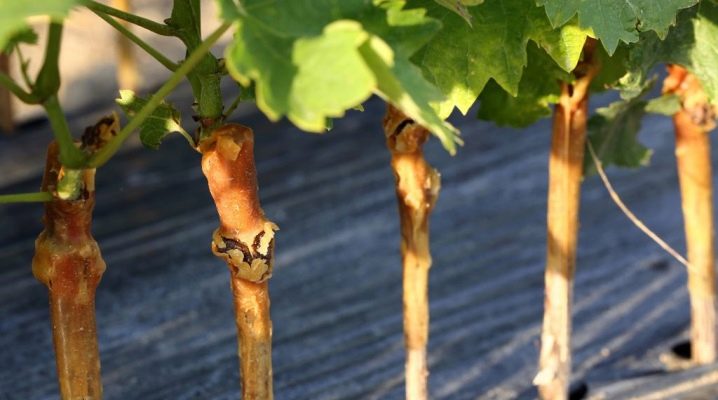
Grafting of grapes is one of the important agronomic measures. Thanks to him, gardeners increase the level of productivity, plant immunity. In order for the procedure to be successful and bring only a positive result, it is necessary to carefully study all the nuances and algorithms.
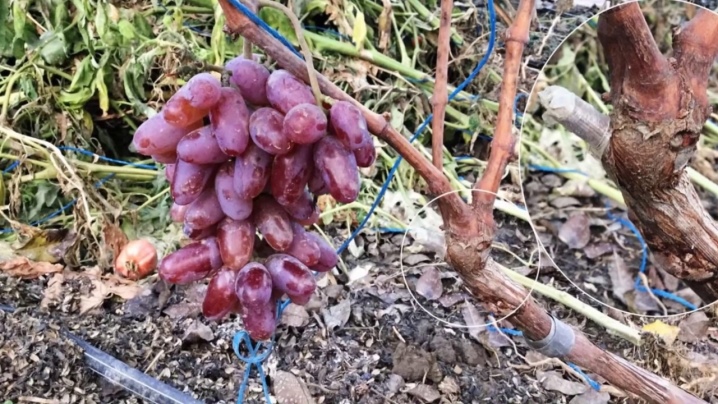
If everything is done correctly, taking into account the characteristics of the plant, grafting methods, the productivity of the grape bush will be high.
Advantages and disadvantages
Grafting of grapes allows the plant to develop more efficiently and solves several problems at once.
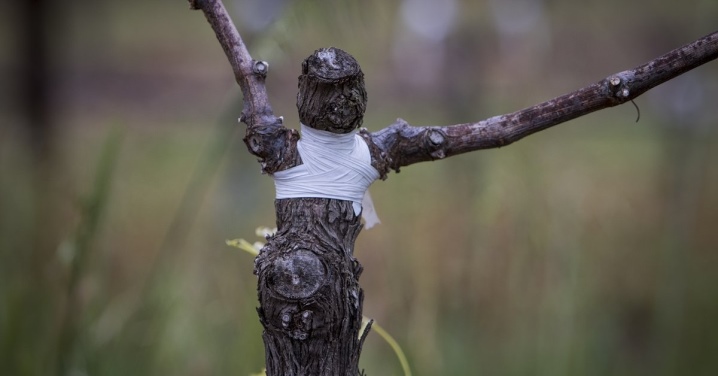
The positive aspects include:
-
a bush grafted onto a stock becomes more resistant to pests, in particular to the most dangerous - phylloxera;
-
even on a modest area, it will be possible to breed a decent number of varieties by varieties, hybrids;
-
there will be no need to dig out obsolete bushes and plant new ones;
-
yields can be increased, especially in those plants that bear little fruit;
-
inoculation makes it possible to restore a bush that has been badly damaged: it has fallen out, frozen, has undergone an invasion of rodents;
-
it is possible to propagate varieties of high value, rare at a good speed;
-
winter-hardy stock makes the shrub more resistant to low temperatures;
-
capricious varieties better tolerate negative conditions, not too rich soils, high humidity;
-
early varieties after grafting begin to bear fruit more actively - if the summer is not too long, this fact is very important;
-
you can create family-type shrubs by grafting several varieties on one base - this increases decorativeness, reduces costs;
-
different mixes of rootstock, scion allow to qualitatively improve the fruits, their size, taste;
-
old bushes can form the basis for creating other varieties - there is no need to uproot them.
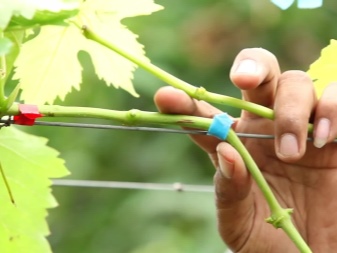

Despite all the advantages, grafted grape seedlings have their disadvantages:
-
busting with the number of grafts leads to errors in the accretion of the scion, rootstock;
-
possible rejection of rootstock and scion by plants;
-
you need to study a lot of information and be able to apply it to your plants, taking into account their characteristics.
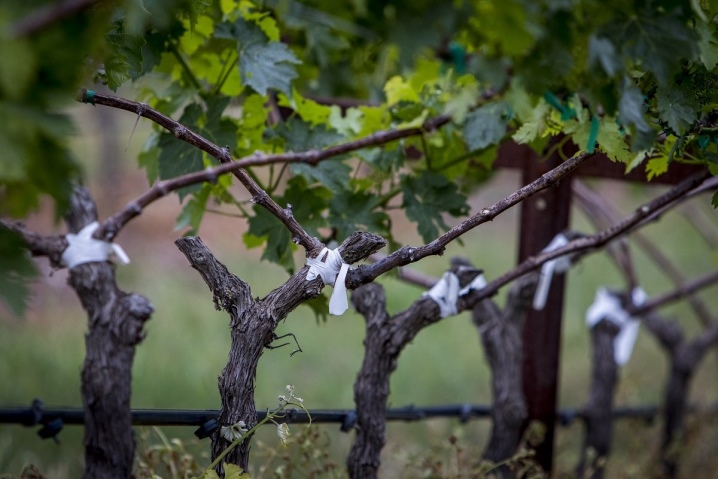
Timing
The time of year is a very important moment for a successful vaccination (as well as the method of the procedure). You can graft the plant in autumn, spring, summer and even winter. But the choice of method depends on the season directly.
Spring grafting and its features:
-
this method is preferred by most gardeners, the usual time for her is from late April to early May;
-
more important is the state in which the bush is located, and the established temperature, and not calendar dates;
-
before the start of sap flow, it is not recommended to start vaccination, at the very beginning of this period, the survival rate is several times higher;
-
the scion should not grow earlier than the rootstock, therefore it is closed from sunlight;
-
to make the sap flow more dynamic, you need to increase the amount of moisture to abundant;
-
for spring, the option is suitable when buds are just beginning to bloom on both parts of the vaccination, it is also called "black to black";
-
the cuttings used for this grafting are prepared in the fall;
-
this method is suitable for grafting single shoots and germinated rootstock.

Summer vaccination has its own nuances:
-
the optimal time in the summer is the first months, in August the procedure is not carried out;
-
cuttings do not need to be prepared in advance, they are cut immediately before the event;
-
different methods are suitable: "black to green", "green to green";
-
it is important that the weather is not sunny, cloudy, but no precipitation;
-
the optimal temperature is not higher than + 25 degrees;
-
it is better to do this either in the early morning or in the evening after 18-00;
-
the method in which green is grafted to green allows you to immediately cut off the cuttings, which are installed on the stock by copulation;
-
but cuttings harvested from the autumn period are also suitable for summer replanting, they need to form a cut below the bud.

The autumn period is also suitable for this procedure:
-
for this time of year, grafting on middle-aged roots is optimal: by the method into the trunk or by splitting;
-
this method makes it possible to rejuvenate bushes that have already outlived their maturity, the yield increases, the fruits can be harvested as early as the next season;
-
the temperature should not fall below +15, therefore, when choosing a month, it is better to focus on this indicator, and in September or November, it does not matter;
-
the crop is removed completely, the foliage should turn yellow;
-
cuttings should be kept in a stimulating composition a couple of days before the event;
-
grafting is done in any possible way.

Winter vaccination has a number of nuances:
-
the optimal period is from January to March for one-year or two-year-olds;
-
autumn cuttings are suitable for this procedure, harvested in a standard way;
-
in parallel with the formation of cuttings, the preparation of the shanks is carried out;
-
do not forget to process materials with a solution of potassium permanganate;
-
then they are kept cool: basement or cellar;
-
per day, the materials are moved to a warm place and lowered into water;
-
if the grafting method is split, the plant is not taken out of the water;
-
for about 20 days the vine is at room temperature, new shoots must be removed;
-
when the outside temperature is above +15, you can plant the material in open soil.
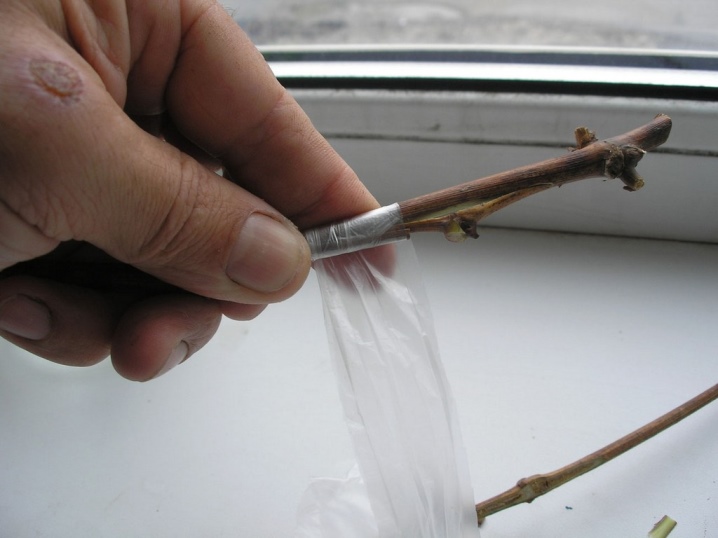
Stocking and storage of stock
High-quality material is most often harvested in the fall, it is called cuttings or shanks. It is optimal to prepare them before the frosts begin, that is, until November. It is important that the cut is neat and even, so it is better to practice, for this, branches are used that are not needed. The upper section of the shoots is not suitable for making cuttings.
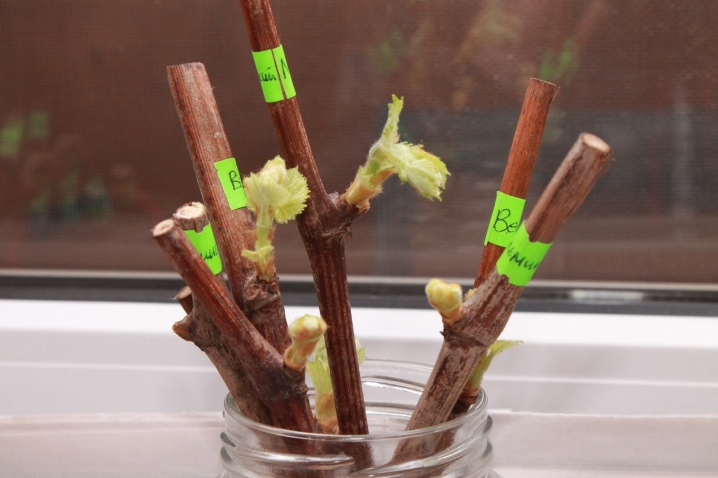
Also, do not take shoots that are curved, not ripe, and have damage.
Optimum characteristics of a quality stock:
-
frost resistance;
-
powerful growth;
-
immunity to disease;
-
an underground bole should be well developed.
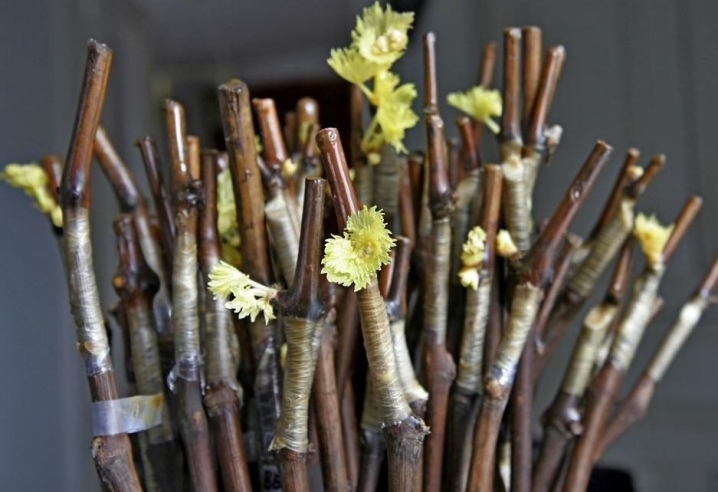
There are cuttings parameters that you should focus on:
-
diameter - from 8 mm;
-
eyes in the amount of 2 or 3;
-
length varies from 9 to 12 cm;
-
the shoot, clinging to the support (mustache), fell off at the node below - if the mustache did not fall off, it means that the plant is not ripe, the chances of survival become higher;
-
the knot should be stiff and well developed.
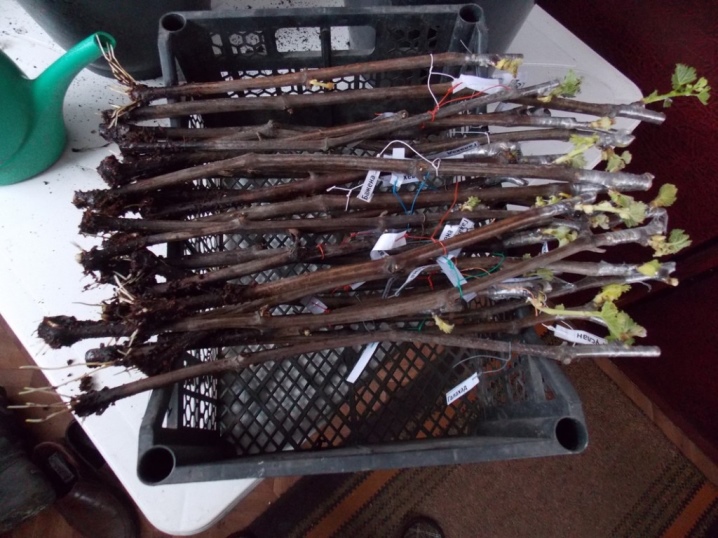
If you plan to plant more than one scion on one base, then the section on them should be absolutely identical. The bush from which the material is taken must be absolutely healthy, fruiting is active, at least three years. It is not enough to prepare cuttings of high quality - you need to correctly organize storage:
-
first, the material must be disinfected, for this, copper sulfate is used, a short procedure is enough;
-
after drying, the material is wrapped in polyethylene, you can use a damp cloth;
-
after that, the cuttings can be stored in a cellar or refrigerator (on the lower shelf);
-
in the cellar, you can put containers with sand, bury the material in them, sprinkle with sawdust on top;
-
storage mode varies from - 2 to + 2 C;
-
too old bushes are not suitable for harvesting.

The basis is also prepared for the event: foliar feeding with phosphorus and potassium in the composition is carried out in advance. Some experts fertilize with honey, which they lubricate the branches with before cutting.
Young growth is removed 7 days before the procedure: foliage, mustache, shoots (from below and to the level of future material). The bush also needs to be watered very well.
The ways
It is not always easy for beginners to graft or re-graft a plant correctly. Before starting the procedure, you need to prepare everything that is required for this and understand the terminology.
-
Graft - it can be a cutting, a bud, which need to be tied to the stock, the taste, quality and quantity of the crop depend on this material.
-
Rootstock - the base on which the scion is tied. It depends on it whether the plant will be frost-resistant, with good endurance, excellent immunity, the stock stimulates growth and nutrition.

The fact that the graft does not always take root on the rootstock should not be overlooked. There are varieties that are incompatible, but it will not be possible to know for sure in advance. Vaccinations are divided into two types.
-
Green. The time is from spring to autumn, that is, from the very beginning of the appearance of foliage to falling off. Green grafts have their own classification: standard, root, split or sleeve, green to green, black to black, black to green.
-
Tabletop. This is a winter version of the event, when the cuttings are taken out of a calm state and planted in the ground already in a settled, formed form.
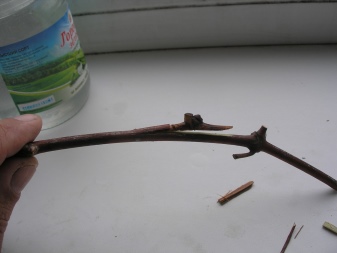

If you carefully study the grafting technology and follow the basic rules, then difficulties should not arise. All of the methods listed below have a good survival rate.
In the bole
Grafting into the trunk has a very serious advantage - it is possible to tie two different types of grapes. The number of buds on cuttings is at least three, this is very important.

The algorithm of the event is as follows:
-
the bole is dug to a depth of about 30 cm, the diameter of the excavation is about half a meter;
-
the inoculation zone is selected, a perpendicular cut is created;
-
the saw cut is cleaned with a knife, you need to remove any irregularities;
-
rubbish, sawdust, dirt are collected with a rag;
-
the stem is split according to the maximum cut size, the optimal depth varies from 2 to 3 cm;
-
then something strong is inserted into the split itself, like a screwdriver;
-
the scion is prepared - on the cuttings, cone-type cuts with a length of about 2-3 cm are created;
-
slices are created downward from the lowest eye at a distance of about 6 cm;
-
the cuttings are placed in water, and after water - in a solution with stimulating properties for just a few seconds;
-
the handle is installed in the trunk in such a way that the outer parts coincide, and the peephole from below is directed outward;
-
the wedge is removed, the gap is sealed with paper, a polyethylene film is placed on top, the barrel is wrapped;
-
the stem is coated with clay so that the grafting is not affected - this will protect the plant from frost;
-
the grafting area is covered with soil, closed with a cut plastic bottle.
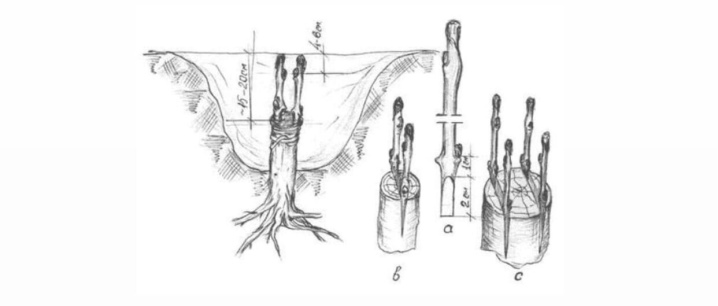
Into the cleft
This method is suitable for early spring, it belongs to the black to black variety. The graft is separated from a thick branch, which has a dark bark. The bark is cut off, making a five-centimeter indent from the knot. The algorithm of actions is as follows:
-
cuttings are removed from the place where they are stored (they are sent there two days before the procedure);
-
the tip is sharpened from below a few centimeters and lowered into a stimulating-type solution;
-
the trunk is dug in, cleaned of bark;
-
in the middle of the trunk, a split of the longitudinal type is formed, the depth is up to 4 cm;
-
very sharp instrumentation is required to create a cleavage;
-
two cuttings are introduced into the split - on both sides, the grafting is fastened with a rope, coated with a solution of clay;
-
the grafting area should be treated with a garden-type varnish, sprinkled on top with sawdust and soil.
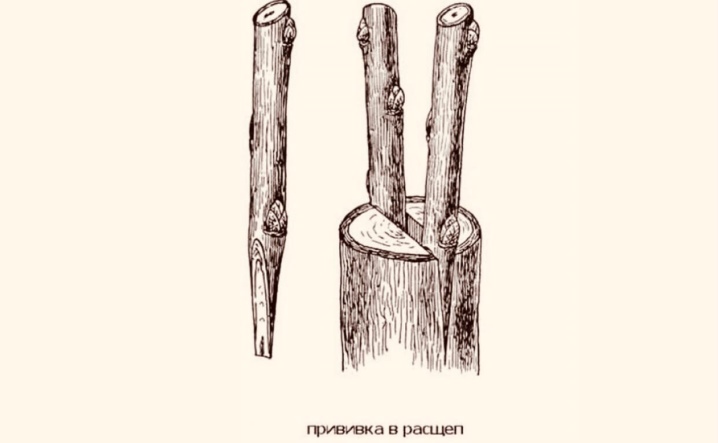
Semi-cleavage
This method is similar to the previous one, but there is a significant difference - the number of cuttings for grafting. The scheme of this procedure is for two scions, one rootstock in a split, and in a semi-split - for each scion its own stock.
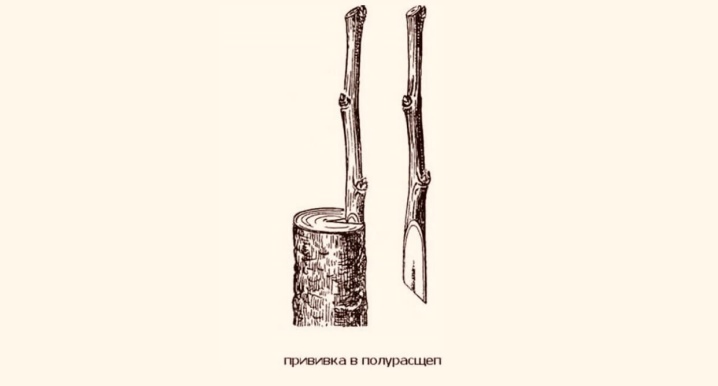
The optimal time for the procedure is the beginning of spring: March or April.
Drilling
An uncomplicated type of vaccination, which is simpler than the previous one.In addition, it has another obvious plus - a high survival rate. The algorithm of actions is as follows:
-
pre-prepared cuttings are removed from the place where they are stored, wrapped in a damp cloth;
-
they need to lie down at room temperature;
-
then the tips are cleared from the bark by half a centimeter;
-
you need to choose a drill with a diameter close to the same parameter of the scion, it must be disinfected in a manganese solution;
-
in the center of the trunk, a hole is created 4 cm deep or a little more;
-
the scion is inserted into the created hole, the grafting is covered with a solution of clay;
-
for the grafting to be successful, you need to tie several cuttings to one stem.
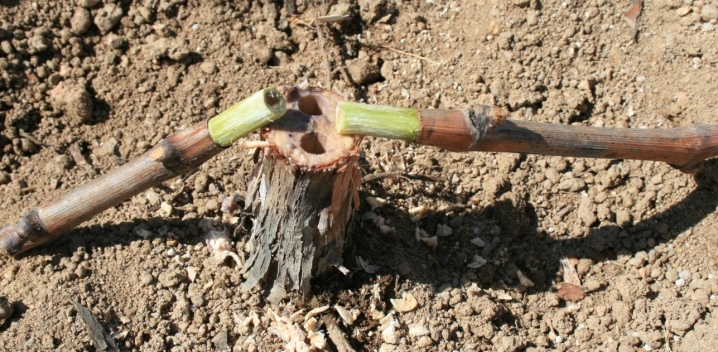
Copulation
To carry out the direct-type copulation procedure, you need to select a material of the same diameter, which is immersed in water for two days. The procedure is as follows:
-
a slant-type cut is formed on the rootstock, in length it should be approximately 2 times larger than the diameter of the stem;
-
a slice is created on the scion, which should coincide with the diameter of the slice on the rootstock;
-
the cuts are connected, the grafting is coated with garden varnish;
-
on top, the grafting is sprinkled with loose soil;
-
after a while, sap will appear on top (liquid flowing from damage to the tree).
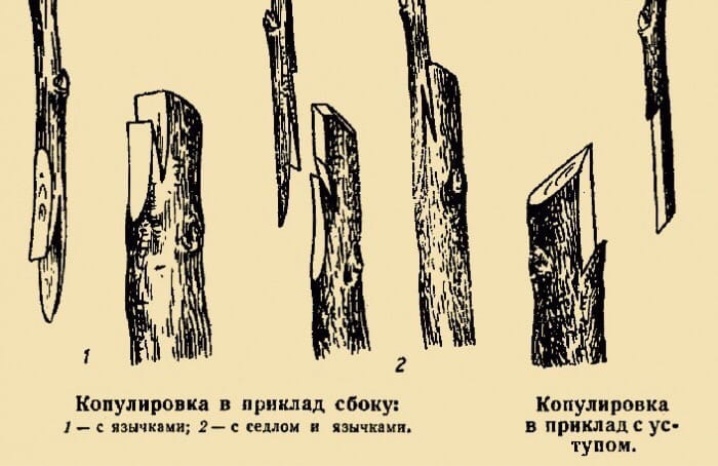
Budding
The optimal method for carrying out the procedure in the spring, the survival rate is very high. If the region has a humid climate, then this method is ideal. The procedure is as follows:
-
leaves, stepchildren are torn off from the rootstock vine;
-
the stalk is pointed like a tetrahedron;
-
from the sides of the stem, angular cutouts are created, which coincide with the scion wedges;
-
the handle with a wedge is applied to the incision on the base;
-
then the grafting is tied with twine and processed with garden varnish.
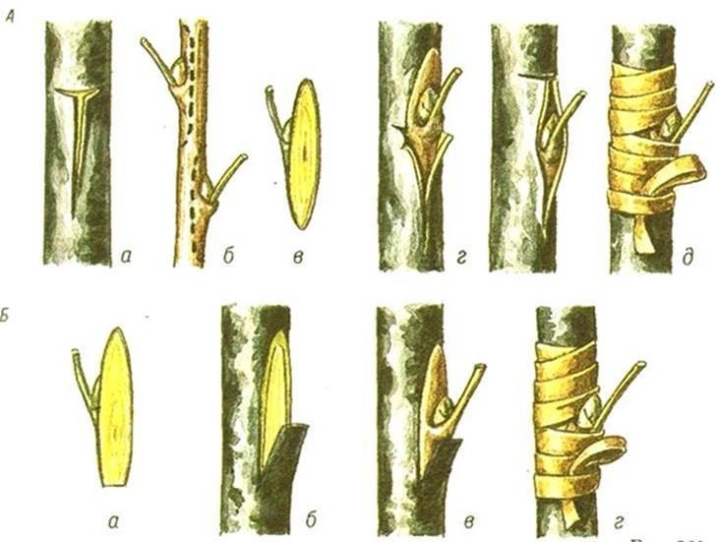
The optimal time for the procedure is late spring and early summer. Green material is grafted in summer, woody material in spring.
Back to back
This type of procedure refers to underground, it can be done in the spring, this time is best suited. It is done this way:
-
the stock is dug up to about 10 cm in depth, then it must be cleaned of soil;
-
the stem is cut off at a five-centimeter level;
-
the material and base must be free of roughness, of the same size;
-
a thin wood hairpin is inserted into the center of the stock and is located perpendicularly;
-
a scion is pushed onto the hairpin and fastened in this way;
-
the zone is wrapped with cotton wool, previously soaked in potassium permanganate, and on top - with paper;
-
the hole is covered with wet sawdust, closed with a film, a polyethylene bag.

On an old bush
This type of procedure allows you to increase yields and get berries much earlier than planting seedlings. Fruiting begins in a season or two, the main thing is to prepare the material in the fall. This event is suitable for any grape variety. The procedure is as follows:
-
a hole is dug next to the base bush, the depth is about 20 cm;
-
the aerial part is removed completely, and cuttings are grafted onto the remnant trunk - from 1 to 4;
-
the material is sharpened wedge-shaped: from the side - by 2 cm, the sharpened angle - up to 30 degrees;
-
the trunk is split with a knife approximately 3 cm deep;
-
cuttings are inserted from the edges (if you want to tie 4 pieces at once, the trunk diameter should not be less than 7 cm);
-
for this amount of material, two splits are created, two cuttings are inserted;
-
the grafting site is pulled together, the hole next to the trunk is sprinkled with soil and well moistened.
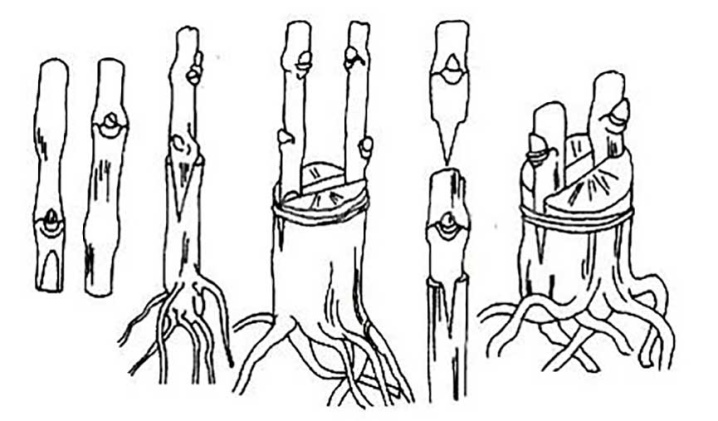
To the root
A variety of grafting into the skeletal root is suitable for those cases when the underground shaft is short and good quality cleavage cannot be created. The skeletal root itself acts as a basis; it is separated from the trunk and fixed to a low support. Cuttings are grafted into the root by any method described above: splitting, semi-splitting, and so on.
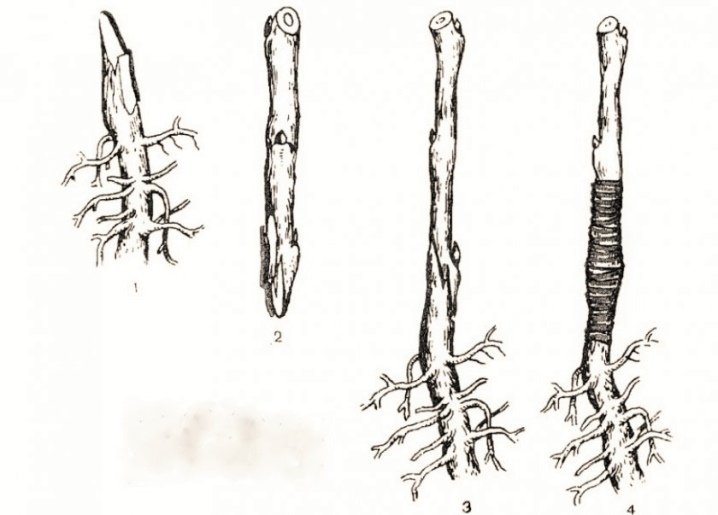
Often, gardeners, if they are dissatisfied with the taste of the fruit, try to dig up a shrub and plant a new one. However, this method is far from the best. Re-grafting is much more expedient in this case, of course, if the bush develops well and does not get sick. The crop can be harvested as early as the third season. The grafting procedure is carried out either in early spring or in late autumn, while part of the bush above the ground is removed.
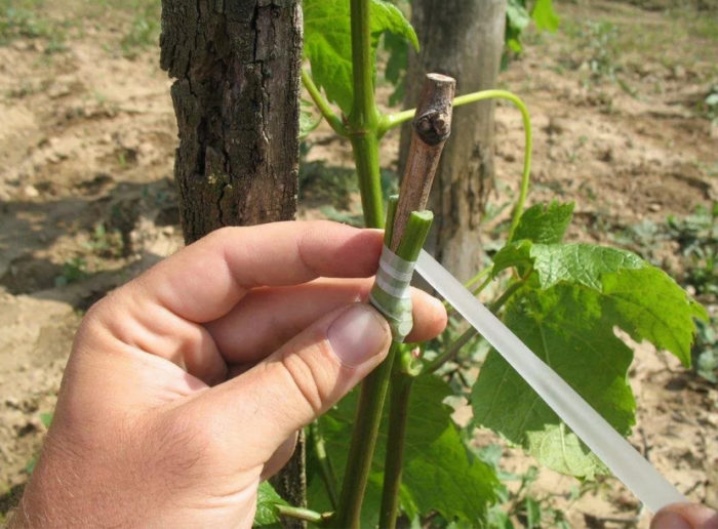
The material is grafted into the cleft or black into green.
It is important to take into account the mistakes that are made during the procedure. They drastically reduce the engraftment success. If you store the material illiterately, do not monitor humidity, temperature, and other parameters, the risk of problems will increase dramatically. Dry cuttings do not take root in principle, so they must be kept in film or paraffin. Too deep cleavage provokes decay processes, as humid air gets there. An uneven cut is another common mistake, and it is most often made due to a not very sharp tool.

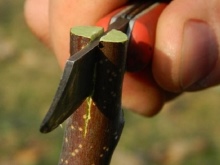
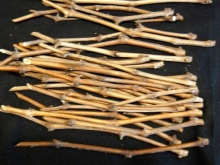
Follow-up care
It is very important not only to graft the plant correctly, but also to take very good care of it. The health of the plant and its yield will depend on this. Among the important agrotechnical measures, the following are distinguished:
- within a year after the procedure, a mound of soil near the seedling is loosened;
- after a month - one and a half after the procedure, the soil is removed from one side, the roots appearing on the handle are cleaned - they need to be cut off;
- the task is for the base and the material to completely grow together, creating one whole;
- the roots are cut off, the hill is covered with soil;
- the shoots that appear are regularly cut off;
- once a week and a half, spray with Bordeaux liquid, increasing its percentage;
- if the first part of summer is not rainy, it is necessary to water the soil weekly;
- on poor soil, additional fertilizing is necessary, but it is not necessary to fertilize the soil more than three times;
- it is important to keep the connection intact and safe, you need to pinch the shoots that have grown longer than forty centimeters;
- at the end of summer, when the shoots are stiff, the hills are removed;
- undergrowth must be pruned to ensure full penetration of nutrients, this is done for about 4 years.
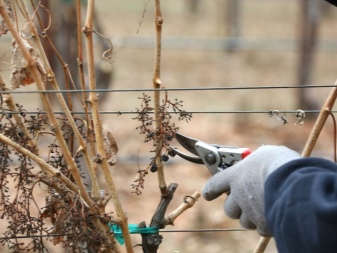


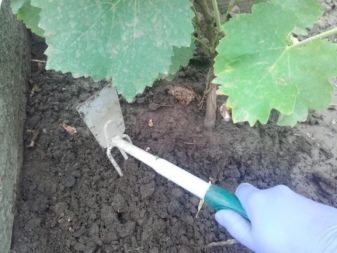
Experts recommend that beginners take into account the following points:
- always clean tools that need to be disinfected;
- you should follow all the rules of the method that you have chosen;
- ensure tight contact between the base and the material;
- take into account the characteristic climate problems in the region when choosing a scion;
- the material and the base must match in terms of growth intensity;
- use fresh blanks in autumn and summer;
- in the spring, plant with autumn cuttings;
- it is better to make a cut from yourself, since it should be of a concave type;
- the vine is cut at an angle of a straight type, heading along the growth vector;
- do not forget about the temperature regime;
- always care for the grafted plant until it is fully established.

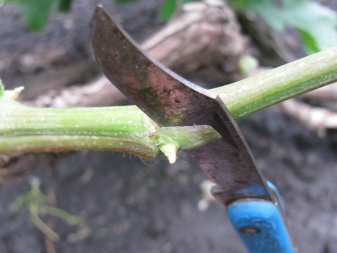
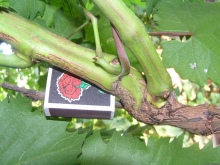
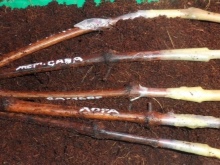
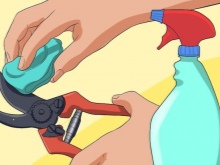






The comment was sent successfully.